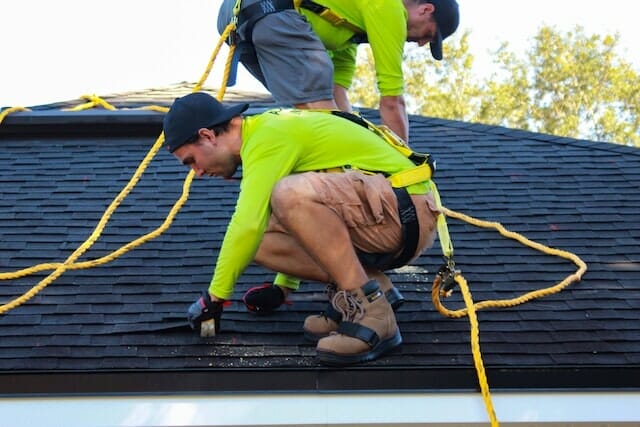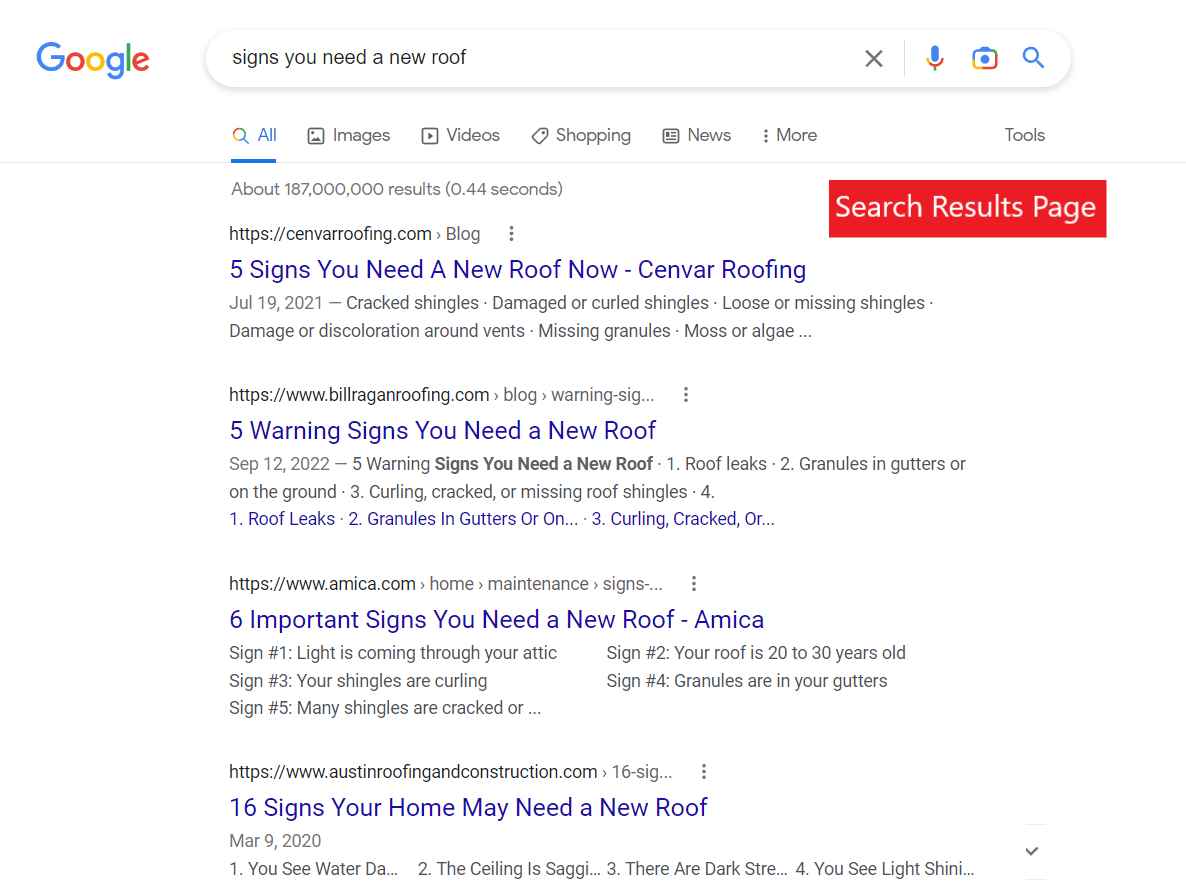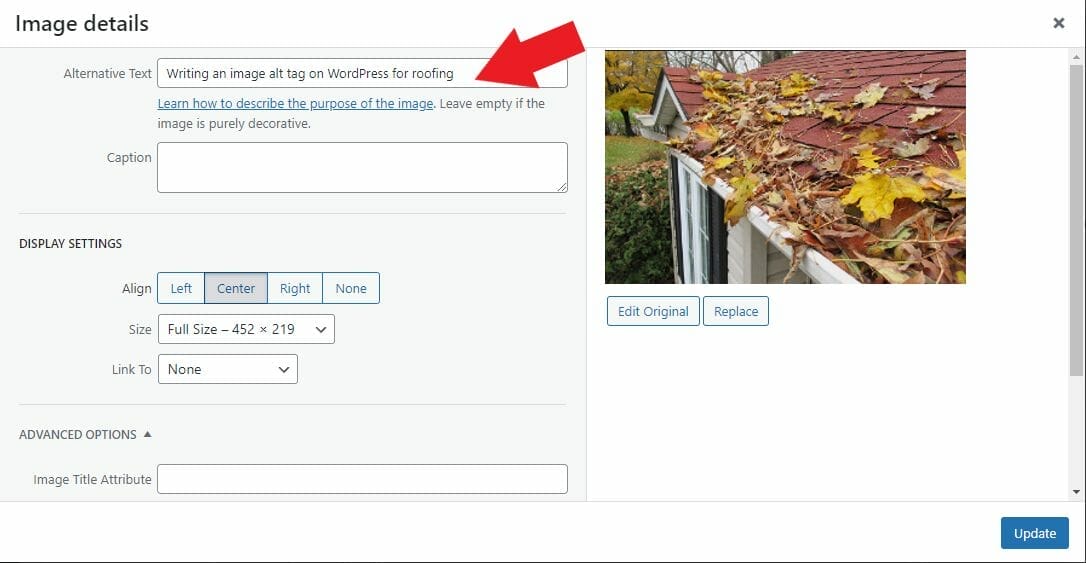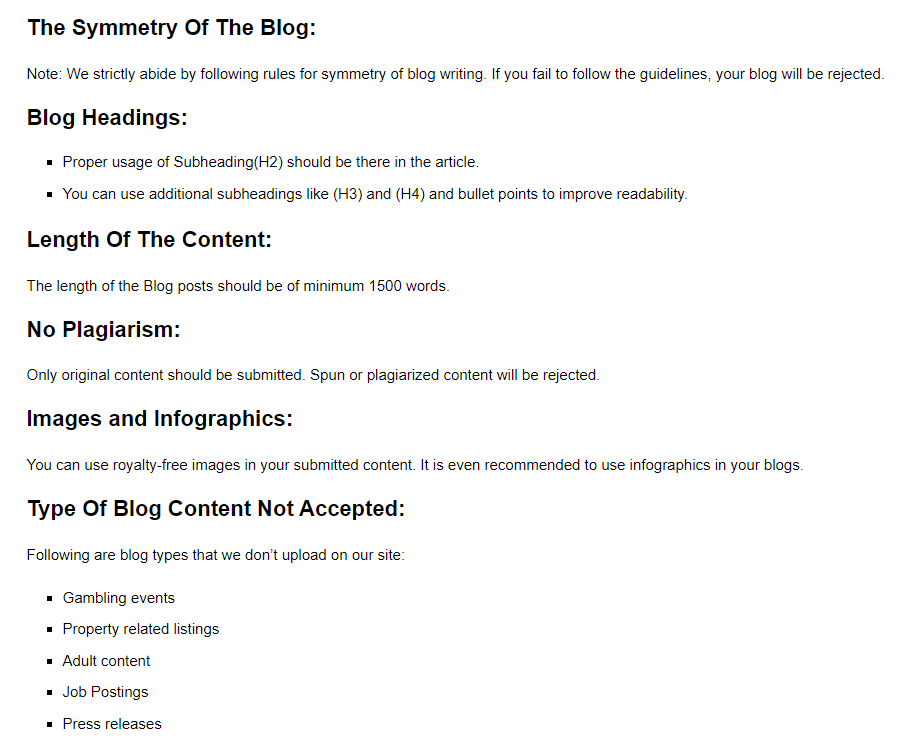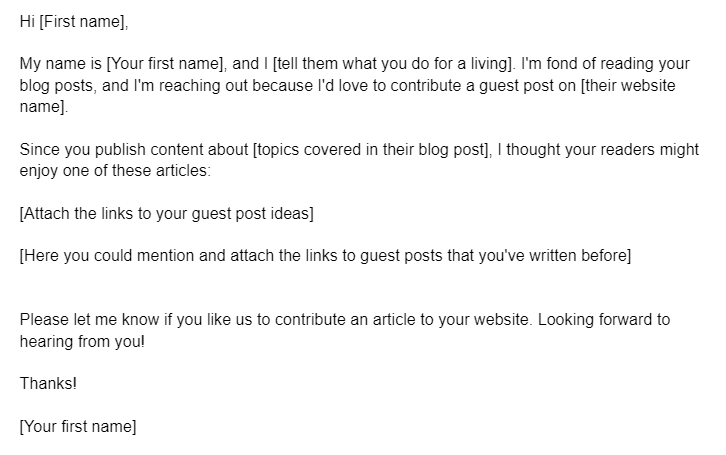Table of Contents
ToggleWhat is SEO and why is it important?
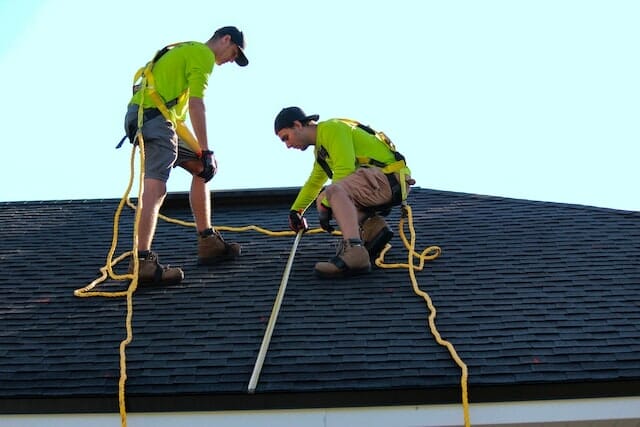
Whenever someone searches for a roofing company, you want to be the first thing that people see on Google’s Search Engine’s Results Page (SERP).
That’s where Search Engine Optimization (SEO) comes in.
SEO is all about improving the quality and ranking of your website so that people who are looking for roofing services will choose you over your competitors.
Aside from driving long-term success, improving your rank on search results, and getting lots of traffic, one of the reasons why SEO for roofing companies is important is that consumers will always want to educate themselves about roofing topics before they choose which roofing company to get services from. It plays a huge role in their decision-making process.
Here’s a visual representation of the frequently asked questions from people using the search term “roofing companies.”

As you can see, there’s a wide range of topics you can cover so your brand shows up in every stage of a consumer’s buying journey. If you recently launched your roofing company and looking for ways to establish your credibility in the roofing industry, providing content that’s valuable to your potential customers is one of the effective marketing strategies to use.
And that’s not even half of it.
People also use search terms like “roofing services near me” or replace the word “near me” with the places near your roofing company (e.g. Roofing Company Miami).
If we take a look at the search volume for the keyword “roofing companies near me” alone, it gets an average of 74,000 estimated searches per month. Aside from that, there are tons of keyword variations that are used with the word “roofing” in it.

So, make sure you do lots of research before going for a certain keyword because you won’t get high-quality leads if you aren’t targeting keywords and topics that people commonly search for.
How to do SEO for roofing companies
Now that you have an idea of how SEO works, here’s a list of what you can do to optimize your roofing company’s website:
1. On-page SEO
On-page SEO refers to the process of optimizing your website by making changes to elements you have full control of. If your roofing company shows up on the top 3 Google Search Results, there are high chances of getting more than half of all the clicks because your brand is one of the first few things that users see.
Here are some useful tips on how to do On-page SEO:
1. Understand search intent
Keyword research is the process of understanding the search intent of your target audience and looking for keyword ideas to increase your visibility on the Search Engine Results Page. Since you want to be on top of search results, you want to make sure that you’re targeting the right keywords.
Here’s a list of keyword research tools that you can use for free:
Google’s predictive search feature
Have you noticed that when you search for something on Google, there are relevant terms that appear below your search term? These are formulated based on the popular searches that people in your area are also searching for.

Related searches section
The related searches section can be seen at the bottom of Google’s search results. It also includes related searches from people who are also looking for roofing services.
Keywords Surfer
Keyword Surfer is a browser extension that tells you lots of useful information about your chosen keyword. It includes the estimated monthly search volumes and keyword ideas with supporting correlation charts. This helps you identify the exact keywords that your competitors are using, and more!
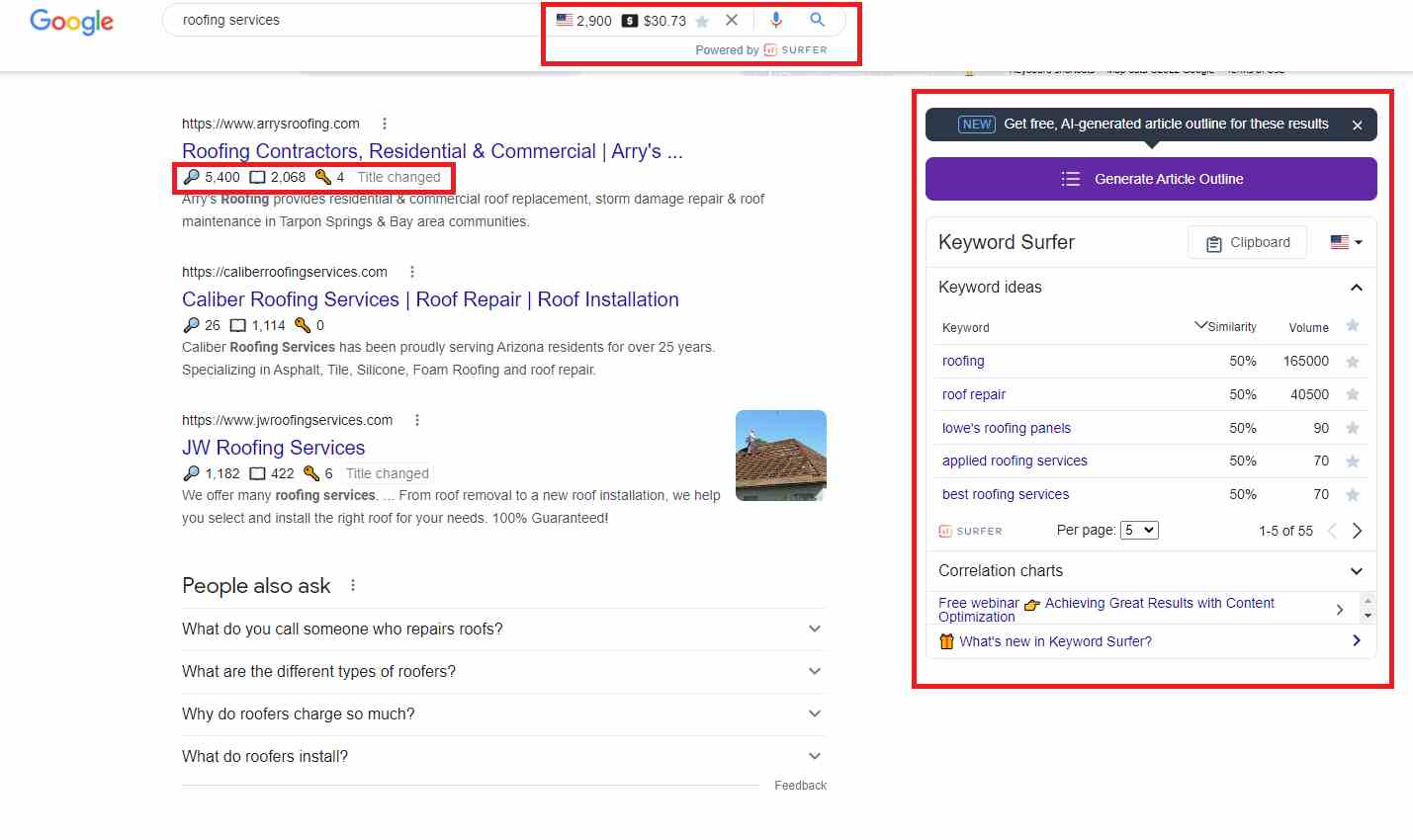
Ahref’s Keyword Generator Tool
One of the best features that Ahrefs have is the free keyword generator. It provides useful insights such as keyword difficulty, phrase match keywords, and questions that are typically asked by your potential clients on search engines like Google, Bing, YouTube, and Amazon.
If you’re using its free version, you’ll only see the top 10 results. To unlock more features, you have to avail of their monthly subscription which starts at $99 USD.

Or you can do your keyword research manually by following these steps:
- Think of a topic that you want to write about. It should be something that’s relevant to the services that you’re offering (which is roofing).
- Once you’ve decided on your keyword, launch a search engine and enter the keyword that you want to use on your content. This will give you an idea about the type of content that ranks high for your chosen keyword. In this example, let’s use the keyword, “signs you need a new roof.”

- It’ll show you a list of relevant pages about your chosen keyword. From this point, you’ll individually check these pages to see how many times the keyword was used throughout the content.

- For example, we clicked the post that ranks #1 for the keyword “signs you need a new roof.” From this post, you want to see how many times the phrase “new roof” was mentioned in your competitor’s post.
- Press Ctrl + F followed by the keyword you’re planning to use on your blog. In this example, let’s use the keyword “new roof.”
- It’ll give you an idea of where you should strategically place your target keywords on your roofing blogs (e.g. headings or paragraphs).

- Repeat the same procedures for the other posts from your competitors.
2. Title tag and Meta tag optimization
Title tags are the ones that users first see on search engine results.
Where do title tags and meta descriptions appear?
On the search engine results page:

On your web browser:
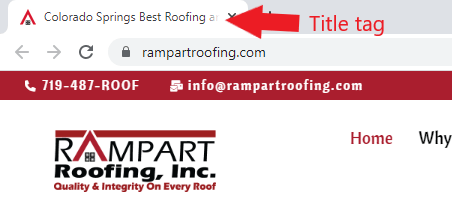
Here’s a list of what you can do to optimize your title tags:
- Your title tag should be relevant to the content of your page
- Use the main keyword that you are going for
- Keep it under 50 characters
- Consider a searcher’s intent
- Use 2nd person pov
- Give the searcher a reason to click (sense of urgency)
- Add modifiers like “best”, “guide”, “checklist”, etc.
The meta description appears below a title tag. It acts like your sales pitch but is written in limited characters.
How to optimize your meta descriptions:
- Write unique meta descriptions for each page on your roofing company’s website
- The optimal length should be somewhere between 50-160 characters
- Write it in a way that will ignite the curiosity of searchers (should be persuasive, interesting, and relevant)
- Show them the benefits of clicking on your page
- Include a CTA
3. Internal links
Internal links are the other pages that can be found on your website. This helps in providing a better online experience for your page visitors because it acts as a way of recommending pages that you think they find useful. You’re making it easy for them to check out resources that will give them a better understanding of your roofing services while staying longer on your roofing company’s website.
Best practices for Internal Links:
- Create lots of high-quality content
- The more blogs you create, the more internal links you can use on your future blog posts.
- Anchor texts
- Instead of using phrases like “click here” or “this post”, use keyword anchor texts.
- Don’t spam your blogs with too many internal links
- If you’ll notice, some websites spam their blogs with so many internal links. Using internal links is great for your site, but only if it’s used in moderation.
- According to John Mueller’s discussion, too many internal links can confuse Google with your site’s structure. So, if you were to use it on your blog, make sure those are contextual links.
External links
On the other hand, External links, known as backlinks or outbound links, are pages that can be found outside your website. It helps build trust and authority in a website. These are commonly used if you want to provide your page visitors with an in-depth explanation about a certain topic.
Best Practices of External Linking
- Only link to trustworthy websites
- Link to domains with high authority
- Use external links when you’re explaining data (stats), referring to images you got from other websites, or talking about software
- Make all external links open to a new window
4. Optimize images
The larger the sizes of images you use on your website, the longer it takes before it fully loads. Knowing that people’s attention span keeps on getting shorter and shorter if it takes more than 3 seconds to load, there’s a tendency that a page visitor will abandon your site and go for your competitors instead.
Tips for optimizing images:
- Compress images without ruining their quality
- Images with bigger file sizes tend to cause your roofing company’s website to load slower. But, the smaller an image’s file size is, the poorer the quality. So, when compressing images, make sure that the file size is minimized but not to the point where the image quality is affected (e.g. blurry, pixelated, less appealing).
- Online image compression software like CompressNow allows you to adjust the compression level based on your preference.
- Images with bigger file sizes tend to cause your roofing company’s website to load slower. But, the smaller an image’s file size is, the poorer the quality. So, when compressing images, make sure that the file size is minimized but not to the point where the image quality is affected (e.g. blurry, pixelated, less appealing).
- Use proper alt tags
- Image Alt text or Alt tags refer to the description of images used on your roofing company’s website. Its purpose is to help users understand what the image is all about if it doesn’t load, help visually impaired individuals understand the context of the images used, and at the same time, make it easier for search engines to crawl on your website. Here are some tips on how to use proper alt tags:
- Don’t stuff too many keywords
- Yes, you have to implement your target keywords on your image descriptions but filling your alt tags with keywords results in a poor user experience. So, when writing describing images, use other keyword variations to make it look natural. For example, if your target keyword is “how to generate leads for roofers”, you can use “lead generation for roofers” instead.
- Provide a clear context of what the image is all about
- Since alt tags play a role in user experience, make sure that when describing the image, it’s relevant to the context of your blog. For example, if you’re writing a blog about “Common Roofing Problems”, and you’re using an image of clogged gutters, your alt tag should be written as “Clogged gutters as one of the common roofing problems.”
- Since alt tags play a role in user experience, make sure that when describing the image, it’s relevant to the context of your blog. For example, if you’re writing a blog about “Common Roofing Problems”, and you’re using an image of clogged gutters, your alt tag should be written as “Clogged gutters as one of the common roofing problems.”
- Be specific
- Google already knows that you are describing an image. So, don’t start with phrases like “Image of” or “Picture of.” Provide a clear and detailed description right away.
- Keep it less than 125 characters
- To prevent your alt tags from being cut off in the middle of the sentence, it’s best to describe the images used within 125 characters or less.
- Don’t stuff too many keywords
- Review alt tags
- Typographical errors happen not just throughout your content but also on alt tags. So, before you publish your content, make sure to check all of the alt tags used to prevent search engines from getting confused when analyzing your roofing website.
- Image Alt text or Alt tags refer to the description of images used on your roofing company’s website. Its purpose is to help users understand what the image is all about if it doesn’t load, help visually impaired individuals understand the context of the images used, and at the same time, make it easier for search engines to crawl on your website. Here are some tips on how to use proper alt tags:
- Avoid using filenames like IMG_08759
- When uploading images., instead of using IMG_08759, replace it by using the keyword you’re going for. For example, if it’s an image of a man having clogged gutters at home, the file name shouldn’t be DQU6341.jpg, but clogged-gutter-issue.jpeg.
- The main subject of the photo should appear at the beginning of the filename.
5. Responsive design
A page that has a responsive design means that all of your pages and buttons work well on all devices. Since more than half of the global population is using mobile phones to surf the internet, you have to make sure that your roofing company’s website is functional and easy to navigate no matter what device is used.
Why does it matter?
#1 Google favors websites that are mobile-friendly
#2 It’s one of the factors why page visitors return
#3 Results in a lower bounce rate
6. URL Slug
URL slug consists of words that are typically found at the end of a web address. Its purpose is to provide useful information to users and search engines as to what the webpage is all about. For example, if the URL is https://yoyofumedia.com/google-ads-for-roofers, then, the URL slug is google-ads-for-roofers.
Best practices for URL Slug:
- Should contain 1-2 of your focus keyword
- Since URL slugs tell users and search engines what your page is all about, make sure to include your focus keyword. Not only because it’s one of the minor ranking factors, but also because it increases the confidence of your potential customers (knowing that your page contains relevant information that they’re looking for).
- Recommended length: 3-5 words
- The shorter the URL slugs, the better.
- Avoid using weird characters
- Keep your URL Slug simple and user-friendly. Don’t use random numbers and weird characters because search engines and users will have difficulty comprehending what your page is all about.
- Remove articles (e.g. “a”, “an, “the”, etc.)
- For example, if your blog post is entitled “What is the Ideal Roof for Houses”, instead of writing your URL slug as what-is-the-idea–roof-for-houses, use ideal-roof-for-houses instead.
Interested in SEO for roofers but don’t have time?
2. Off-page SEO
Off-page SEO refers to the actions taken outside your website to improve your ranking on search engines. These are actions that are beyond your control.
Its purpose is for search engines to perceive your website as something that’s trustworthy and authoritative. At the same time, helps you outrank competitors that have a higher authority than your roofing company.
1. Acquire backlinks
Backlinks play an important role in improving your rankings on Google. This takes place when a website links to a page from another website. For example, when other websites link to one of your blog posts, it means that they consider your blog as a reliable source of information and have high-quality content.
The more backlinks your roofing company website gets, the higher authority your domain gets.
Tips on how to acquire backlinks:
- Guest posting
- Guest posting is another way to drive more traffic to your site, build your domain’s authority, expand your network and improve your ranking on search results.
- It’s the process of sharing your expertise through writing blog posts on other websites in the roofing industry. When Google sees that other websites are linking back to your blog on their websites, it’ll have an idea that you’ve written a high-quality and relevant post.
- Tips for guest posting:
- Step 1: Look for guest blogging opportunities
- The first step in guest posting is to look for guest posting opportunities. To find guest blogging opportunities, you can simply search “roofing contributor write for us”, or “roofing guest blog” on Google. Then, compile all the sites and their email addresses into a spreadsheet so that it’ll be easier for you to keep track of how your guest blogging is going on so far.
- Some of the important details that should be included in that spreadsheet are the following: name of your prospect websites, URL, Moz Domain Authority, topics that were already covered, the title of your guest blog idea, contact details, dates where you sent your pitch, a follow-up email, status if it got accepted/rejected if accepted, link of that guest post, and date published.
- Tip: You could also look check at the websites that link back to your competitors with the use of a backlink checker.
- The first step in guest posting is to look for guest posting opportunities. To find guest blogging opportunities, you can simply search “roofing contributor write for us”, or “roofing guest blog” on Google. Then, compile all the sites and their email addresses into a spreadsheet so that it’ll be easier for you to keep track of how your guest blogging is going on so far.
- Step 2: Prepare your guest blogging pitch
- Reaching out to websites that accept guest posts usually takes a lot of time before you get a response. Especially if it’s from well-known websites. While waiting, keep on sending your blogging pitch to other websites (could be startups in the same industry), so you have more options to choose from.
- As you prepare for your pitch, make sure to read and follow the guidelines so that your blog won’t be rejected. Here’s an example guideline from a blog:

- Also, don’t pitch in a blog post about a topic title they’ve already covered.
- Here’s a sample template of an outreach email:

- If you haven’t written guest posts before, you could attach the links to guest posts written by other members of your team.
- Step 3: Send your guest blogging pitch
- Step 4: Send a follow-up email
- Guest post pitches usually get ignored or remain unread but that shouldn’t stop you. You could wait between 1-4 weeks before you send out a follow-up email. If you still haven’t received an email from them, it could be because they’re receiving tons of guest post pitches in their emails, and maybe your topic is not a good fit at the moment but in the future. So, don’t lose hope!
- Step 5: Reply to comments
- If your guest post has been accepted and the website has enabled to receive feedback from readers, don’t forget to engage with those comments.
- Step 1: Look for guest blogging opportunities
- Tips for guest posting:
2. Social media marketing
55% of consumers use social media to learn more about a certain brand. So, if you haven’t created your social media pages on platforms like Facebook, you’re probably missing out on a lot of potential customers!
Here are some tips on how you can make the most of your roofing company’s social media page/profile:
- Share relevant content to your audience
- Before and after repairing the roof of your previous customers
- Since roofing companies specialize in fixing the roof of homeowners and establishments, showcasing your work could be your selling point. So, make sure to capture the before and after transformation of your work.
- Infographic on how to remove stains off your roof
- To capture the attention of your potential customers, you could also turn informational blogs into infographics. Topics like Roofing 101 for homeowners or Roofing maintenance could be a good starting point.
- Inform them on how to avoid roofing scams
- As a person who provides roofing services, your client’s comfort and safety always come first. Since you don’t want to lose your potential clients, you should inform them of the current trends and issues that some people face like creating an awareness post on “How to Spot Fake Roofing Contractors.” This will help establish trust in your brand.
- Before and after repairing the roof of your previous customers
3. Content marketing
Content marketing is the process of creating and sharing useful content with your target audience on various platforms. Its purpose is to attract, engage, and retain your potential and existing customers. It can be in the form of blog posts, podcasts, newsletters, videos, etc.
Blog posts
Another way to bring in new customers and traffic to your website is through writing blog posts. In fact, 57% of marketers have gained customers through blogging. For roofing companies like you, you could use this opportunity to share your expertise about roofs and at the same time, promote your services.
Blog post Ideas for roofing companies:
- Do’s and Don’ts of Roof Replacement
- How-to Prevent Roofs from Rusting
- Tips on Choosing a Roofing Contractor
- Checklist for Hiring a Roofing Contractor
- Informative blogs about roofs

Source: chaffeeroofing.com
Podcasts
Another way of promoting your roofing company is through Podcasts. It is shared in the form of an audio file that anyone can listen to while performing their daily tasks. Based on a recent study by BBC, podcasts get a higher engagement rate compared to TV and radio.
So, if you are looking for a unique way to reach your target audience and have extra time to spare, try creating roofing podcasts! Here are some tips that will guide you in creating a podcast for your roofing company:
- Find the best platform for your roofing company (e.g. Spotify, Apple Music, Buzzsprout, etc.)
- Use keywords related to your roofing services
- Include transcripts
- Mention it on your blogs
- Share it on social media
- Keep it short but interesting
- Have a relevant theme
4. Link building
Link building is the process of getting other websites to link back to your roofing company’s website. As the number of backlinks you get increases, your domain’s authority increases as well. A website that has a high domain authority, has a higher chance of ranking high on SERP.
Tips on how to increase your domain authority:
- Create unique and high-quality content
- People are more likely to link to a website if it has a unique and in-depth discussion about a certain topic.
- Acquiring good backlinks
- See guest post section above on how to do it.
- Remove bad backlinks
- Removing bad links from your site can be time-consuming because you have to go through all of your posts. But, with the help of software like Google Search Console and Google Analytics, it’ll be easier to catch these issues.
5. Get listed on online business directories
Most online business directories allow you to claim your business listing for free. Online directories like Google My Business, Yelp, and Nextdoor are effective when it comes to establishing your online presence in places and increasing your brand’s credibility.
Google My Business
Google My Business is a free business listing that helps you establish your presence on Google’s search engine. It’s where you can show basic information about your roofing company. From your contact number, location on Maps, business hours, and even allow you to get reviews from your previous clients.
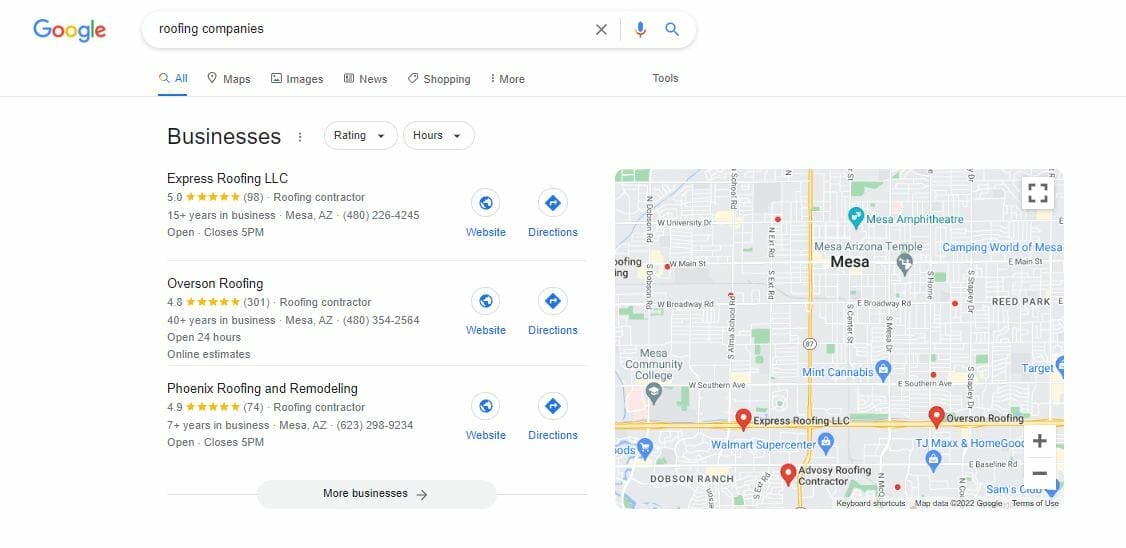
Google’s Local Map Pack refers to the top 3 relevant businesses that show up on the search results page. Your roofing company could be one of the businesses for free but of course, there are measures to do to make it happen.
Tips on how to show up on the Local Map Pack:
- Enter all of the details needed in your Google My Business Profile
- Verify your exact location
- Add relevant photos of your roofing services (e.g. company logo, roofers, previous works)
- Respond to questions raised by your potential clients
- Respond to reviews
Optimize your Google My Business Profile
- Update your business info.
- This includes your contact numbers and business hours
- Verify your location
- Gather more reviews
- Respond to queries
- Upload photos of your recent roof makeovers
You could also publish posts directly on your Google My Business Profile! Check out our blog post on How To Post on Google to learn more.
Yelp
Yelp is another platform that helps business establishments to connect with their target audience which includes requesting a quote, joining a waitlist, making a reservation, or setting an appointment.
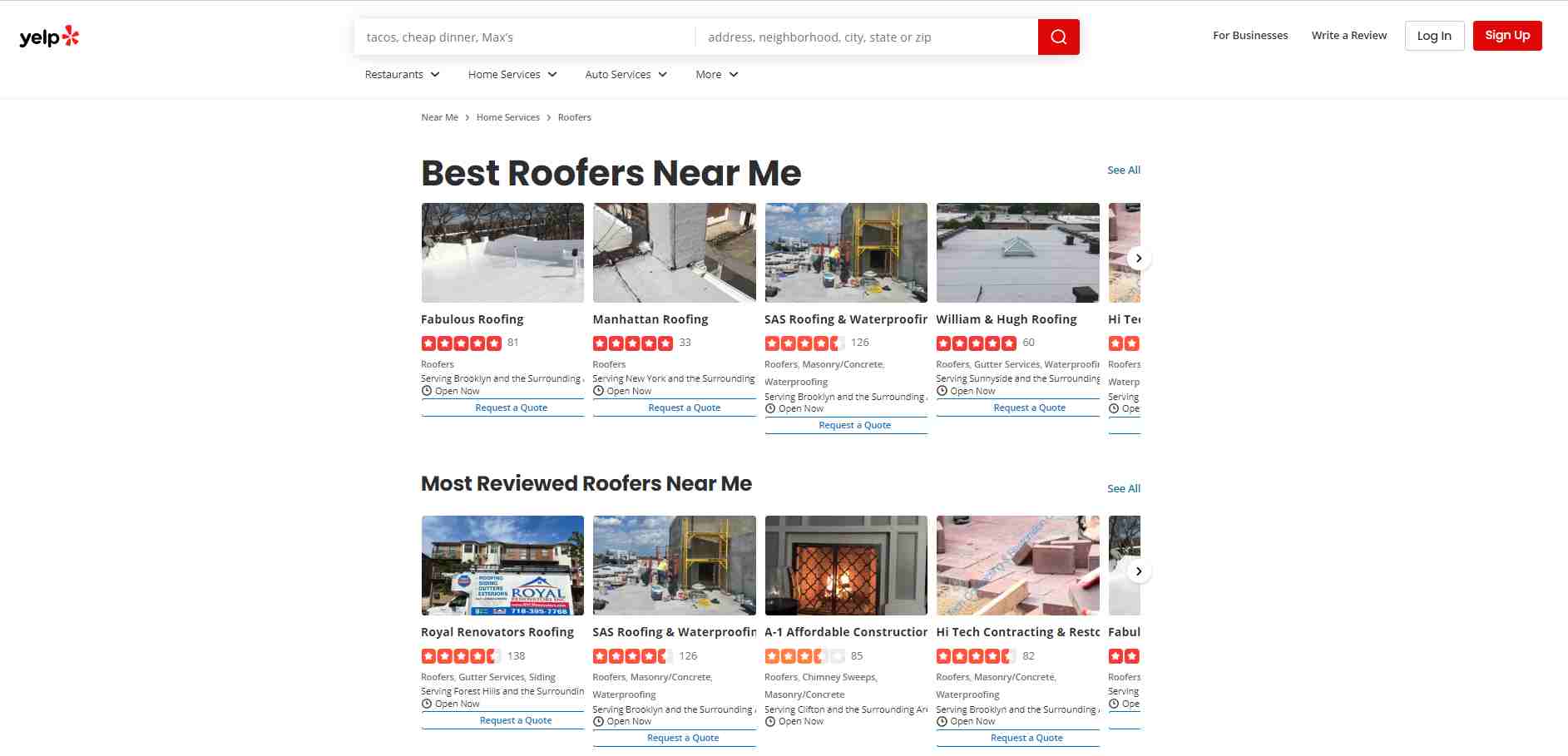
How to optimize your roofer’s profile on Yelp:
- Use actual photos of your roofing services
- Respond to quote requests
- Get customer check-ins
- Make sure your business is listed under the right category
- Address negative reviews
- Acquire badges
6. Participate in online forums
Another off-page SEO technique is by joining conversations on online forums like Reddit and Quora. If you see questions that are relevant to “roofing services”, you could use that as an opportunity to establish your expertise in those platforms. For example, you can briefly answer a question and add the link to your blog post which will give readers a better understanding of the said topic.

Tip: Don’t spam the comment section with links (use it only when needed and if it suits the situation).
7. Influencer Marketing
Influencer marketing is the process of partnering with a famous personality to promote your roofing company. This could be individuals who have a massive number of followers on Instagram, Youtube, or other social media platforms. This type of marketing strategy is effective in promoting your roofing services to a brand new audience which in return gives you more business opportunities.
Tips in influencer marketing:
- Create a list of influencers
- The first step in implementing your influencer marketing strategy is by creating a list of influencers you want to partner with. You might already have someone in mind, but it’s best to have lots of options because there are different types of influencers out there (e.g. Nano, Micro, Macro, Mega, or Celebrity influencers).
- Do lots of research before choosing your influencer
- Before deciding on who to partner with, make sure that it’s someone who shares the same goals, and opinions with your brand and has a good reputation.
- Reach out to your prospects
- Now that you have decided who to partner with, the next thing to do is to make your roofing company visible to them. Here’s what you can do:
- Step 1: Follow/Subscribe to their page or channel
- Step 2: Like their posts
- Step 3: Share their posts
- Step 4: Leave nice comments on their posts
- Step 5: Respond whenever there’s a Q&A
- Step 6: Send them a message
- Now that you have decided who to partner with, the next thing to do is to make your roofing company visible to them. Here’s what you can do:
- Track conversions using discount vouchers
- By giving unique discount vouchers to each influencer, you’ll have an idea of the exact number of times the code has been used and which among your influencers are more effective in driving new customers to your roofing company.
- Give your influencer an affiliate link
- Affiliate links are unique links that usually include your influencer’s username or ID. It is another way of keeping track of the number of clicks and leads you get when an influencer promotes your roofing services.
3. Technical SEO
According to Backlinko, the main elements of Technical SEO are the following: crawling, indexing, rendering, and site structure. Technical SEO refers to the process of making changes in the technical aspects of your roofing company’s website. The reason why you should technically optimize your website is that it’s like you’re helping the crawling bots to get the gist of what your roofing company’s website is all about.
Let’s dive right in on how to do Technical SEO for your roofing company’s website.
1. Test your page loading speed
Page loading speed is one of Google’s ranking factors. According to a survey, 70% of consumers consider a website’s page loading speed when buying a product or service. As page loading time increases, so does the bounce rate.
So, if your roofing company’s website takes a while before it fully loads, you have to start fixing it, or else, you might lose all of those potential clients interested in your roofing services.
To test how fast your roofing company’s website loads, visit your website. It’ll give you an idea of which elements on your roofing company’s website take quite a while before it fully loads.
2. Make sure landing pages are working
Landing pages are one of the most important parts of every marketing campaign. Since its purpose is to drive sales and capture leads, from a user experience perspective, it would be frustrating if they clicked on a website and it redirects them to a 404 error or a page that can’t be found.
So to prevent that from happening, make sure to regularly check your roofing company’s website to see if there are issues that need to be addressed immediately.
3. Check for duplicate content
Duplicate content refers to how similar your content is to other pages which could be found within or outside your domain. In short, these are web pages that have different URLs but have the same content. It happens to anyone, but what’s important is to catch these issues early so that you can immediately resolve them.
Having duplicate content on your website will cause you to lose the volume of traffic you’re getting and what’s worse is that it will negatively affect your rankings on search engines because it’ll have a hard time deciding which to rank since it has similar content.
How to check if you have duplicate content on your site:
- Use duplicate checker plugins.
- Tools like Copyscape and Siteliner let you know which sites have similar content as yours along with the percentage of how identical the content is.
- Manually check it by copying a snippet from one of your blog posts (enclosed with apostrophes) and then, paste it into Google’s search box.
Here’s how to fix duplicate content on your site:
- If both keywords are found in different URLs on your website, remove or replace that keyword
- To make it easier for you, just click CTRL+F to find where that keyword is located on your post.
- Redirect URLs that have duplicate content to proper canonical URLs
- Implement 301 redirects to inform search engines about your preferred URL.
4. Secure your website
Website security is considered one of Google’s ranking factors since 2014. So, if you haven’t installed an SSL certificate on your roofing company’s website, not only does it drive off your potential clients but it also exposes them to data breaches. When that happens, it’ll ruin your reputation and you’ll be held liable for this issue.
Here are some tips on how to secure your roofing website on WordPress:
- Enable a Secure Sockets Layer Certificate
- SSL Certificates serve as digital certificate that provides a secure connection from your users to your website. This is essential to every website especially if you are requesting personal information (e.g. email address, credit card details, contact number, etc.) If you’re using WIX, they automatically install an SSL certificate on your website. But if you’re using WPX, you have to ask their chat support team to install it on your website.
- Prevent malicious login attempts
- Limit login attempts
- Enable 2FA
- Add captcha
- Make sure that you are using the latest version of WordPress
- Install security plugins (to some, it’s automatically installed)
- Create a backup of your website
- Make it a regular habit to monitor your site
5. Spot indexing issues
Not getting enough clicks and impressions on your roofing company’s website? Maybe your website is new and has indexing issues like server errors or other quality issues. With Google Search Console, you can easily check whether your pages are showing up on Google Search, check how your website is performing, alerts you if you need to fix issues, and more!
6. Improve the user experience
When page visitors have a better user experience navigating your roofing website, they usually stay longer and engage with your roofing company’s website. To improve the user experience of your page visitors, here’s a list of what you can do:
- Make sure your site is mobile-optimized
- In the second quarter of 2022, 59% of web traffic comes from mobile phones. So, if your roofing company’s website is awkwardly cropped when used on small devices, that might be a reason why you’re not getting that much traffic.
- How to optimize your roofing company’s website for mobile users:
- Test if your roofing website is mobile-friendly using Google’s mobile-friendly test
- Choose a responsive theme
- If you have pop-ups, adjust their format (should be easy to close, not too big, or too intrusive) for mobile users.
- Remove unnecessary elements on your site
- Get rid of elements that don’t do much on your site. To lessen the clutter, you can use a hamburger menu icon to place less important elements on your site. This way your page visitors can focus on performing a task on your main page.
- Format the content of your landing pages in a way that’s easy to digest
- Create an outline or use headings so that your content can be easily divided into sections.
- Strategically place images on walls of texts.
- If you’re writing long-form content, don’t use more than three sentences per paragraph.
- Use Hemingway App to adjust the readability level of your content (make it grade 8 level or below)
- Make sure that CTA buttons are accessible
- When adding CTA buttons, make sure to write a relevant sentence so that page visitors will be encouraged to take action on your site.
- The format should be visible and stand out among the rest of the elements on your site.
- Place it somewhere that’s surrounded by white space.
Want to start SEO for your roofer’s website?
SEO Performance Metrics
To check if your SEO efforts are working, here are the key metrics that you should keep an eye on:
1. Conversion rate
Conversion rate refers to the percentage of users who’ve taken action to your roofing company’s website. It is calculated by dividing the number of conversions by the total number of page visitors.
2. Web traffic
Web traffic refers to the number of visits your roofing company gets which is called “sessions.” Here, you’ll see where your page visitors are coming from, understand what made them visit your site, and more.
3. Time on page
With the use of software like Google Analytics, you’ll gather useful data from your page visitors. From the average time spent to the actions performed by page visitors on your site (e.g. scrolling, clicking buttons, watching a video, etc.). Having an idea of what makes them stay on your site is important because it lets you know whether you’re attracting the right audience or if it’s just false leads.
4. Bounce rate
Bounce rate refers to the percentage of people leaving your site without performing any action. The possible reasons why people immediately leave your site are the following: (1) You have a poor loading time, (2) Low-quality content (misleading, website design sucks, or maybe your page simply doesn’t have what they are looking for), (3) Not mobile-friendly, (4) Page Not Found, (5) There’s something wrong with your website.
Tips on how to reduce bounce rate:
- Conduct A/B Testing
- This helps you figure out which page is most likely to get more clicks, call your roofing company, or schedule a roof inspection.
- Include a clear CTA button
- Another reason why page visitors leave a website is that they don’t know what step to take after consuming your content. So, make sure to use action-oriented text on your call-to-action buttons (e.g. “Call Now”, “Get A Quote”, “Learn More”, etc.)
- Display exit pop-ups before they leave your site
- Exit pop-ups are one of the effective ways to let your page visitors stick on your roofing company’s website. It appears when cursor movements and scrolling behavior show that a page visitor is about to leave your website.
Need help optimizing your roofing website?
Schedule A Free Strategy Session!
Key takeaway
The results of your SEO efforts don’t reflect overnight. It may take months before you see improvements. However, when done right, it could drive long-term success for your roofing company. So, if you haven’t started optimizing your website, now’s the time to do it! Just follow the tips and tricks we’ve mentioned and let us know how it worked for your roofing company.

